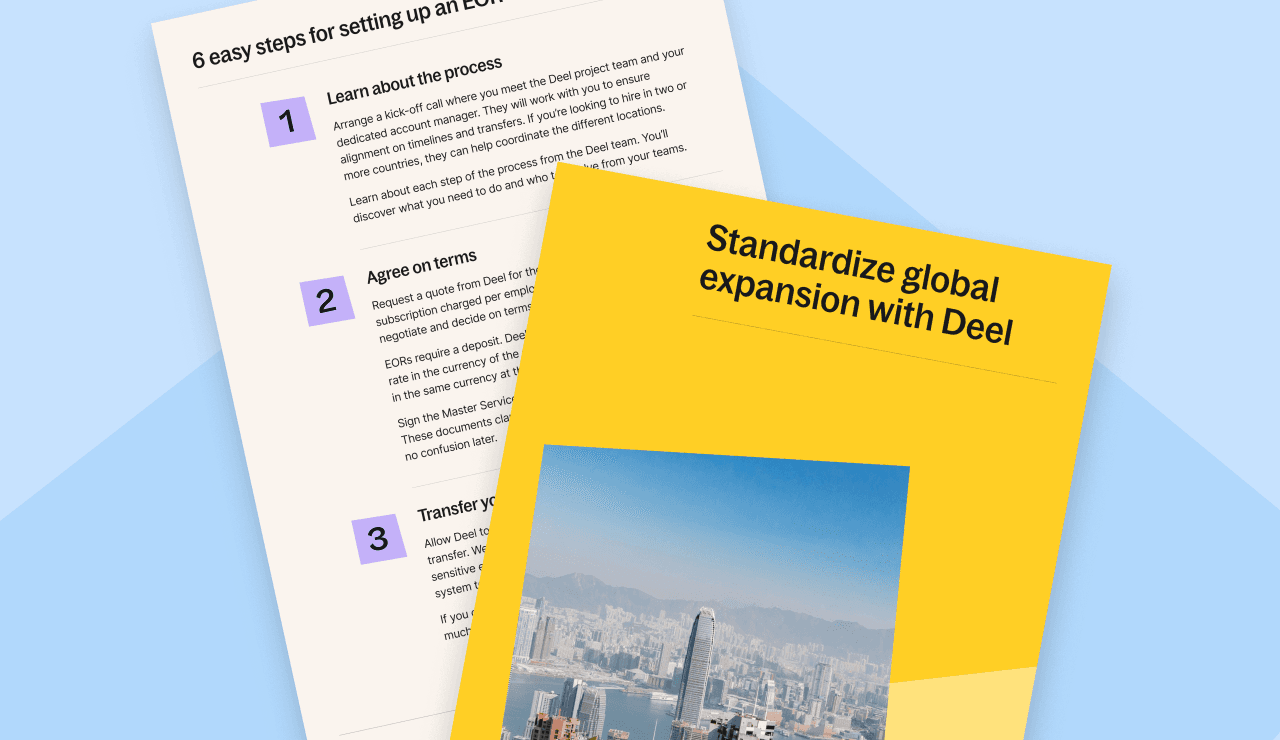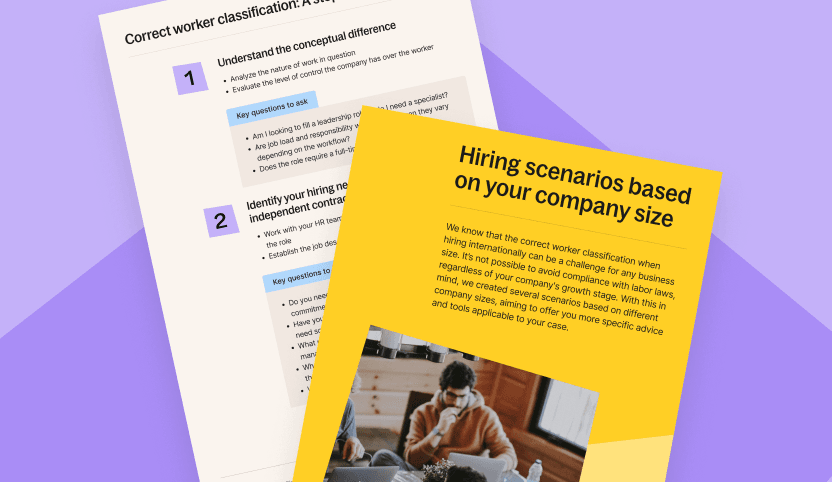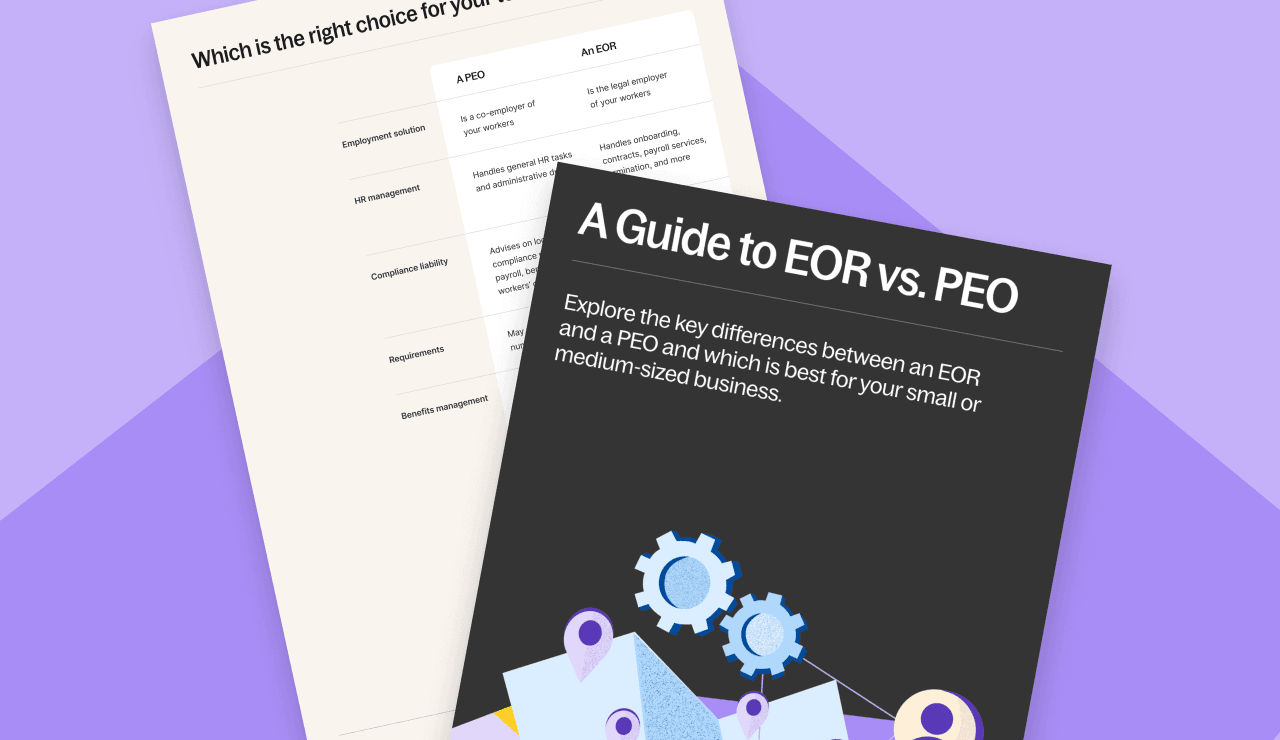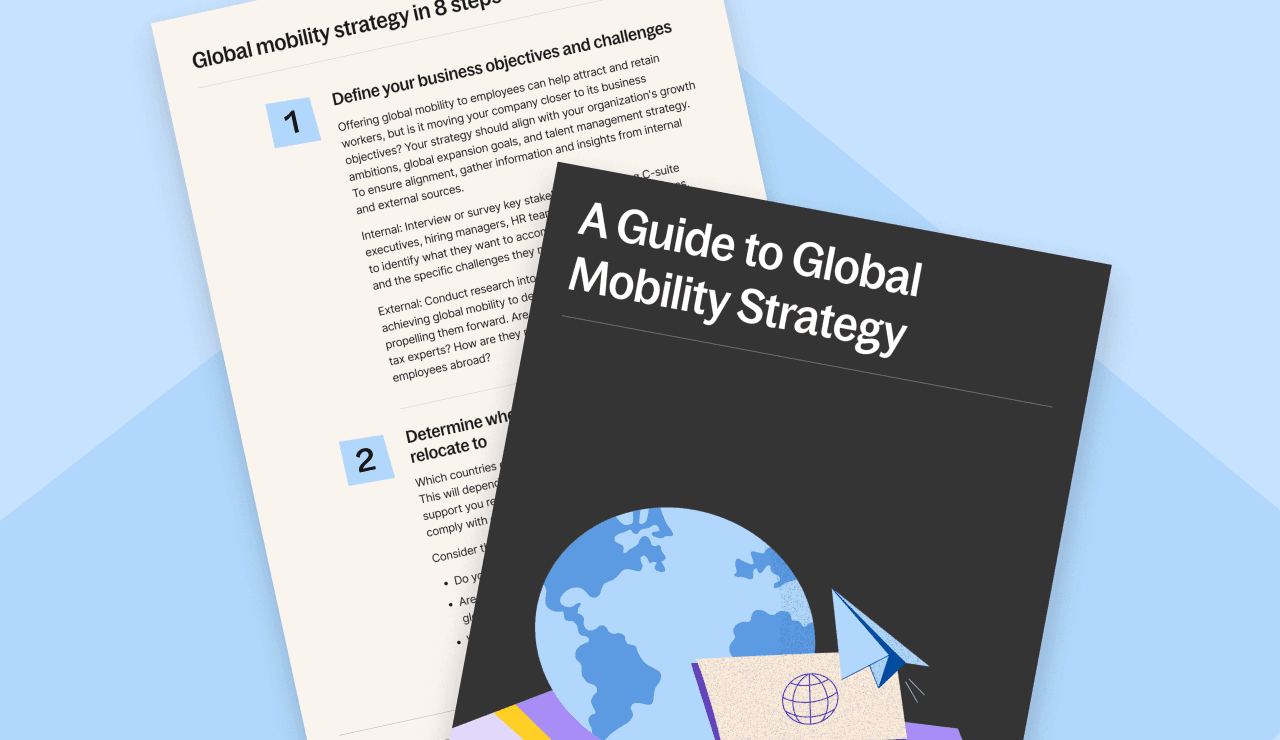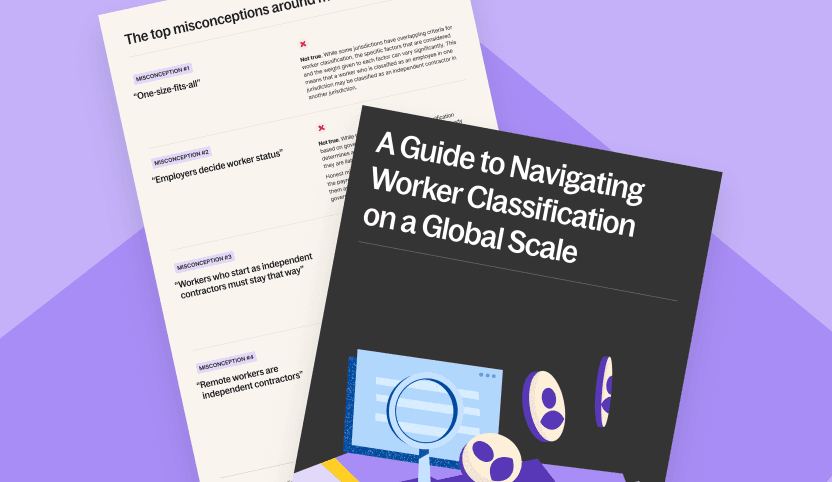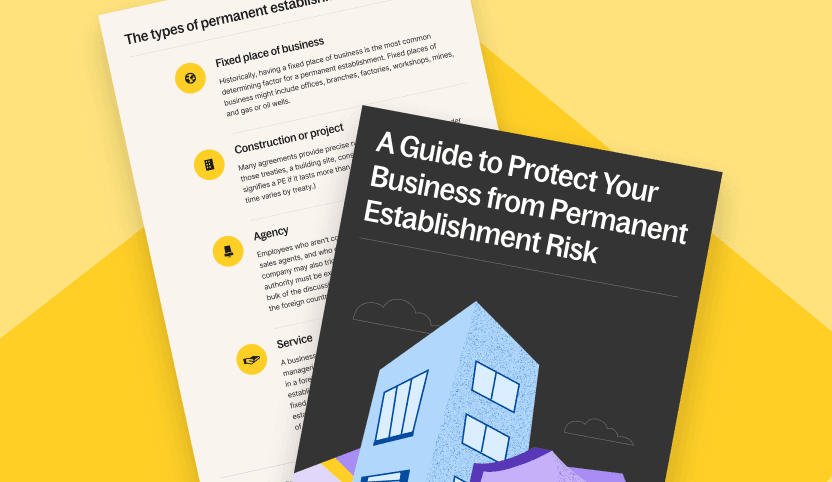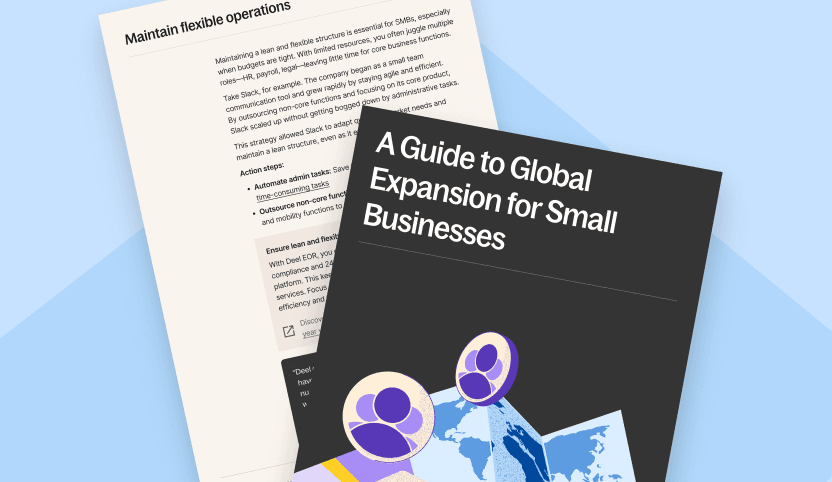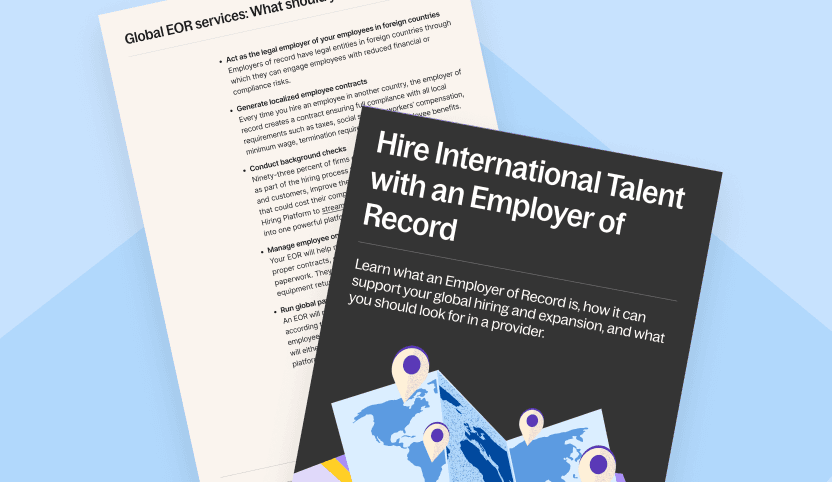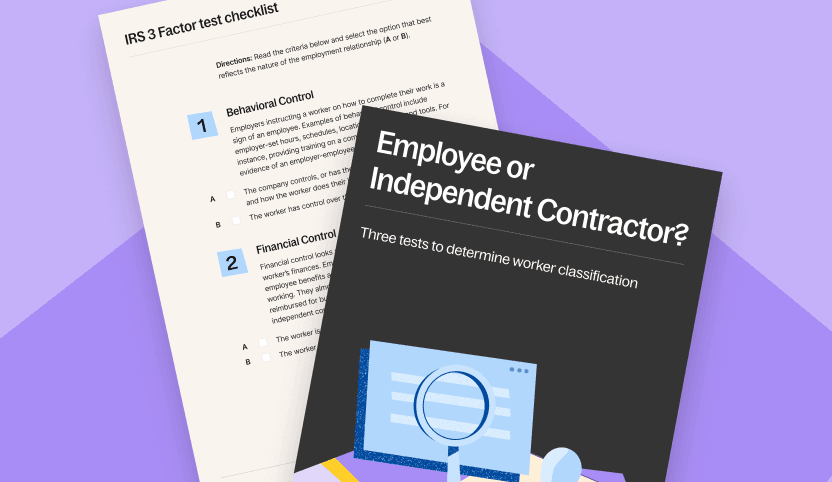Guide
A Guide to Contingent Staffing: Risks & Rewards
Employer of record
Global expansion
Contractor management

Get the resource for free
Key takeaways
- Contingent workers offer flexibility and cost savings. But they come with risks that can undermine these benefits if not managed properly.
- Relying on multiple people management platforms to manage EOR employees and independent contractors (ICs) drives up costs and creates operational inefficiencies.
- Deel EOR and Agent of Record/Contractor of Record services facilitate full compliance with labor laws. They ensure proper classification of EORs and contractors, compliant contracts and agreements, and accurate, compliant payroll.
Who will benefit from this guide?
If you’re a staffing agency that prioritizes client satisfaction, this guide shows how contingent staffing is a cost-effective solution to meet diverse client needs.
Through contingent staffing, you can help rapidly scaling clients to complement the skills within their workforce. This enables them to execute critical tasks and scale their workforce up or down based on their evolving needs. The capability to satisfy these needs gives your staffing agency a significant competitive advantage.
This guide also highlights the associated risks of contingent staffing and offers solutions to minimize them.
This guide demonstrates how to boost profitability for staffing agencies in their growth phase. It shows how centralized people software for managing independent contractors and temporary EOR employees mitigates compliance risks, streamlines operations, cuts costs, and, with Deel, expands your services.
Guide overview
Contingent staffing carries both risks and rewards. However, using multiple EOR and AOR providers amplifies risks, while a centralized people platform with global coverage maximizes rewards.
Learn how to leverage contingent staffing for growth in partnership with Deel.
What’s included
- The benefits of contingent staffing: How it can optimize your workforce strategy
- The challenges to watch out for: The common risks of independent contractors and EOR employees and their potential effects on your agency
- How to get the most out of it: Tactics for maximizing the benefits of contingent staffing while minimizing the risks
More resources
FAQs
What is contingent staffing?
Contingent staffing involves hiring non-permanent workers to address short-term needs, such as project-based tasks or seasonal demands.
What are the disadvantages of contingent workers?
The disadvantages of contingent staffing include:
- Misclassification risks: Incorrectly classifying workers as contractors can lead to penalties and legal issues
- Compliance challenges: Local employment laws for contingent workers vary, making compliance complex
- Liability concerns: Staffing agencies and clients may face costly liabilities if contractors experience workplace injuries
- Intellectual property disputes: Ownership of work created by contingent workers can become a legal gray area
Why do people hire contingent workers?
Hiring contingent workers offers several key benefits, such as:
- Higher job satisfaction: Many workers appreciate the flexibility and autonomy that independent contractor status provides
- Cost savings: Contingent staffing helps cut costs associated with full-time employees, such as bonuses, benefits, and payroll taxes
- Flexibility: Contingent workers are perfect for addressing short-term demands, specific project needs, or managing spikes in workload
- Access to global talent: It’s a low-risk way to expand talent search across geographical boundaries
- Access to expertise: Contingent staffing provides short-term access to specialized skills
- Outsourcing non-core functions: Contingent staff free up permanent employees to focus on core operations



